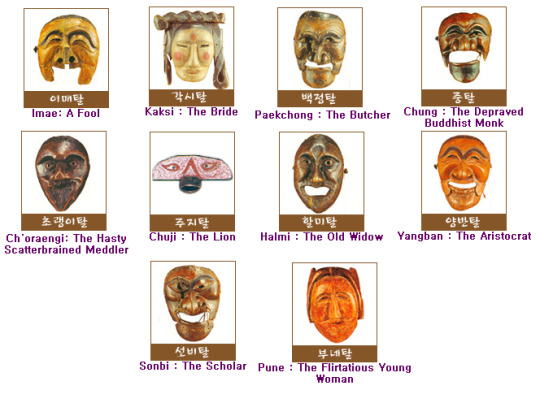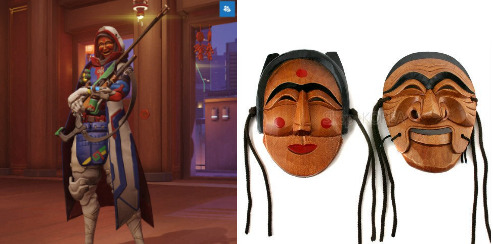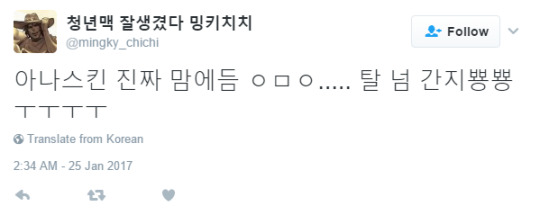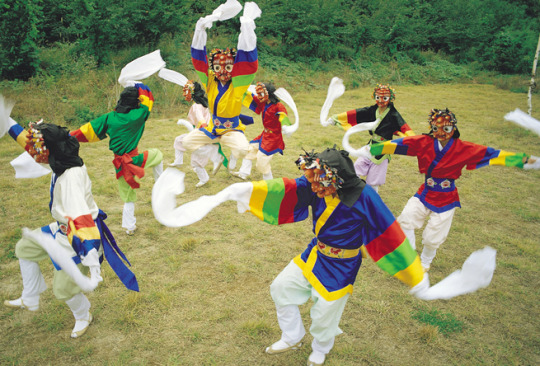#connotative definitions are what drives these convos
Explore tagged Tumblr posts
Text
What’s so funny about the bonnet thing is that y’all are fighting for how it helps all hair types but don’t even know how to use them. The reason black people can throw a bonnet on and it’ll help is bc of fairy knots; like just throwing it on with no kind of product or braiding or laying is to help with smth that can’t even happen to white hair in the same way. Ppl who say bonnets help them and just put it on their head after a ponytail or smth are lying lmao
#I know this from experience!#I started tying my hair down as recently as a few months#before that I would just put my bonnet over my fro and go#which helped with fairy knots at the top of my hair! bc my 4c hair STANDS!#so those ends tangle but thx to the bonnet they don’t move as much#are u seeing why bundling up ur hair and just stuffing it into a bonnet doesn’t provide the same for yt ppl!#it’s why y’all are recommended silk pillowcases over bonnets#bc the type of protection u think ur hair would get from a bonnet would come from that pillowcase#furthermore a pillowcase would do better if ur hair is longer bc ur not bunching it all up#it’s craaaazy#yknow what I’ll even stop saying black and white#I’ll say naturally (emphasis on natural) curly vs straight#hell I’ll say naturally curly vs wavy#CAUSE YALL HAVE FORGOTTEN WHAT WAVY HAIR IS#ur hair is not curly bc it’s not pin straight to ur ass SRRY!#connotative definitions are what drives these convos
27 notes
·
View notes
Text
A little PSA: An explanation of Ovewatch Ana’s “Tal/탈” skin
I am getting tired of people hating on Ana’s Tal skin and while I have expressed my discontent over this unnecessary discourse on twitter I might as well crosspost on tumblr because of non-Koreans trying to spread misinformation about my home country’s culture.

(Ana voice): SHHHHHHHHHHHH calm down kids it’s grandma
Disclaimer: I am Korean. My mother is a Korean teacher who has taught me Korean history/culture. My uncle teaches in a University about Korean history. Chinese cultural appropriation topics will not be mentioned here, because I am not Chinese. Someone with better knowledge about that than make their own posts elsewhere (please).
A quick googling of “tal” or “탈” will give you the following definition (lifted from the all-accessible wikipedia page). I bolded the most relevant parts of this excerpt since I will go into more detail about it in the next paragraphs:
Korean masks have a long tradition with the use in a variety of contexts. Masks are called tal (Hangul: 탈) in Korean, but they are also known by many others names such as gamyeon, gwangdae, chorani, talbak and talbagaji. Korean Mask come with black cloth attached to the sides of the mask designed to cover the back of the head and also to simulate black hair.
They were used in war, on both soldiers and their horses; ceremonially, for burial rites in jade and bronze and for shamanistic ceremonies to drive away evil spirits; to remember the faces of great historical figures in death masks; and in the arts, particularly in ritual dances, courtly, and theatrical plays. The present uses are as miniature masks for tourist souvenirs, or on cell-phones where they hang as good-luck talismans.
The one Ana is specifically wearing is a type of 하회탈 (hahoetal), which describes a type of mask used during theatre (하회별신굿탈놀이) and dance (탈춤) since the 12th century. These performances consist of a cast of character archetypes, which are depicted by the masks. Many of the features in the masks are exaggerated for humorous and dramatic effect. Here are a general list of masks that commonly seen.

Fun fact, Ana’s mask is a hybrid of the Kaksi/각시 and Yangban/양반 mask. And maybe a little bit of the Halmo/할미 depending on the mask design.

These mask plays were performed in villages to ward off evil spirits and to convince the local gods to protect them and bring prosperity. A certain aspect of these performances are also comedic, and a chance for performers to poke fun of the ruling class and taboo subjects like sex. While this is not tied to the Lunar New Year specifically, such performances were done during special occasions like those holidays.
Now you may be asking “this is part of a religious thing! Isn’t that disrespectful??” And trust me, this depiction is FAR from being offensive to most Koreans.
Yes the tal was used for shamanistic rituals, specifically associated with “muism” (무교/신교). However, muism is not a popular Korean religion. While there has a recent uprise in people practicing it/being interested in it, Muism has always faced discrimination in Korean history. Confucianism, Christianity, and even Japanese colonialism has demonized this religion and it was nearly forgotten/eradicated. The most known incident of this is called the misin tapa undong (미신 타파 운동) describes a period from 19th century to the 1980s where various parties (both outside and inside Korea) tried to eradicate muism through various means, including burning down local shrines and villages that were known to practice them. People had to be in hiding so avoid persecution.
Fortunately the Korean government has indirectly protected Muism by making several aspects of their religious traditions as national Korean treasures, including the 탈 among other things. But it is important to note that whole 탈 culture is secularized now. It does not have the religious connotations that it was known for. Hell, the masks are one of the most recognizable features of Korean culture (and seen in many souvenirs). There are places in Korea that preserve this tradition and perform it to the public to spread awareness of its history (the 안동 village every September has an arts festival for all traditional Korean performing arts). FYI, Koreans who appreciate this are not muists themselves, and no one requires you to be one. Lunar New Year is largely a secular holiday, after all.
Now, do you want to see some of the reactions KOREAN FANS had about the Ana skin? Here are few I got off from twitter, with translations from yours truly:

BTW that Ana tal skin is my aesthetic - (x)

That Ana skin is really good ㅇㅁㅇ....tal is really making my heart flutter* - (x)
*간지뿅뿅 is not a really easy thing to translate since it’s a combo of a sound effect and an emotion??? It’s a positive response either way

Ana skin ㅠㅠㅠㅠㅠㅠㅠㅠㅠtal is so good ㅠㅠㅠㅠㅠㅠㅠㅠㅠㅠ - (x)

OMG Ana’s skin is tal LOL that is exciting - (x)
Many of these really are happy their culture is seen! And it’s not depicted in a mocking manner and the overall design is quite lovely, with Korean-design motifs in her clothes. The few relatively negative tweets about her skin are how the cloth may be too bright/gaudy compared to the mask, which is sort of true. The mask is supposed to be seen clearly to show what character the performer is playing out. But the color scheme really looks like those worn for the Bongsan talchum (봉산탈춤), another variety of tal (they are all within the same province btw). And a lot of Korean traditional color schemes are pretty gaudy too.

Alright, so I have told you all I can about the tal culture. Now the you may be asking the following question, summarized well by this tweet:

I think Ana looks awesome in general but what was the concept behind her new skin ???? She’s Egyptian so why wear a Tal? - (x)
To be fair, I was also fairly surprised by the choice for having Ana have the Korean-style skin before I became super ecstatic to see my culture be represented. I do agree it is odd to see a Muslim/Egyptian/Arabic character (two groups that don’t really celebrate Lunar New Year from what I can gather) to be chosen for a Korean skin, but that matter sort of falls into the “Muslim/Egyptian/Arabic culture is underrepresented in Overwatch and gaming media in general” topic and I am not knowledgeable enough to discuss that in detail. A Muslim Overwatch fan has written about this matter here if you want to check it out.
But back on point, is this skin an example of YELLOW FACE or CULTURAL APPROPRIATION? No! When did being Muslim/Arabic/Egyptian =/= you can’t celebrate/appreciate other cultures and their traditions? Did you only want Koreans to get the skin? I am all for D.Va getting more skins (and MAYBE more KOREAN OVERWATCH HEROES) but why restrict the Korean theme onto just one character? Cultural appropriation is when people INAPPROPRIATELY disrespect a culture by mocking them and disregarding the traditions of said culture. Ana is not doing any of this. Besides, Korean tal culture is not closed off to non-Koreans, and there are Korean cultural socities that are willing to offer classes on this and will even teach you how to do the dance/plays (i.e. Sejong University has a site for it).
FYI because I am Korean, I cannot say how Egyptian/Muslim/Arab fans feel about Ana wearing Korean attire for Lunar New Year. I have talked to a few Muslim OW fans/friends about this and given their differing opinions on the matter (including the OP of the muslim underrepresentation post I linked earlier), I cannot really make a confident assumption on how these people generally feel about the skin. On Korean fandom’s end though, we love the skin! It’s great Blizzard took the time to research Korean culture and make a skin that isn’t mocking Koreans. And Blizzard does have some ties with Korea itself due to its HUGE gaming culture/fanbase, so it is possible BlizzKorea has gotten input there for this event. Being between two BIG Asian countries (Japan and China), Korea is often left out and this event was a really nice breath of fresh air. We are represented!! We are not some invisible culture between the big two!!!
And if you are not part of this culture, just PLEASE let other people speak out about the matter before getting on your moral high horse to talk about appropriation.
Now, does that mean the Korean fandom thinks Blizzard is a perfect company? NO! Honestly the entire event is MOSTLY about Chinese culture (with some Korean stuff squeezed in between). Other Asian countries that celebrate Lunar New Year have been ignored (i.e. Southeast Asian cultures and some Indian cultures celebrate Lunar New Year and they are not included despite Symmetra being Indian, etc). These discrepancies are good starting points to discuss underrepresentation in media that Blizzard can learn about and hopefully include in their future updates. From what I can see, the Overwatch developers have been receptive to this feedback so it would be good to have that convo in their official forums too.
FYI, I personally feel like there could have been more Korean stuff for this event period. In America at least, it really sucks that Lunar New Year is ALWAYS called Chinese New Year despite other countries also celebrating it...RIP. But I appreciate that this game has made Korean culture more visible. Here’s hope to more visible Korean stuff in gaming and elsewhere! Where is my “새해 복 많이 받으세요” voice line for D.Va? I demand answers Blizzard!!!
Anyway, hope that has taught you something new, and Happy Lunar New Year to everyone!
#a psa#overwatch#d.va#korean culture#ana#ana amari#korea#lunar new year#year of the rooster overwatch
6K notes
·
View notes